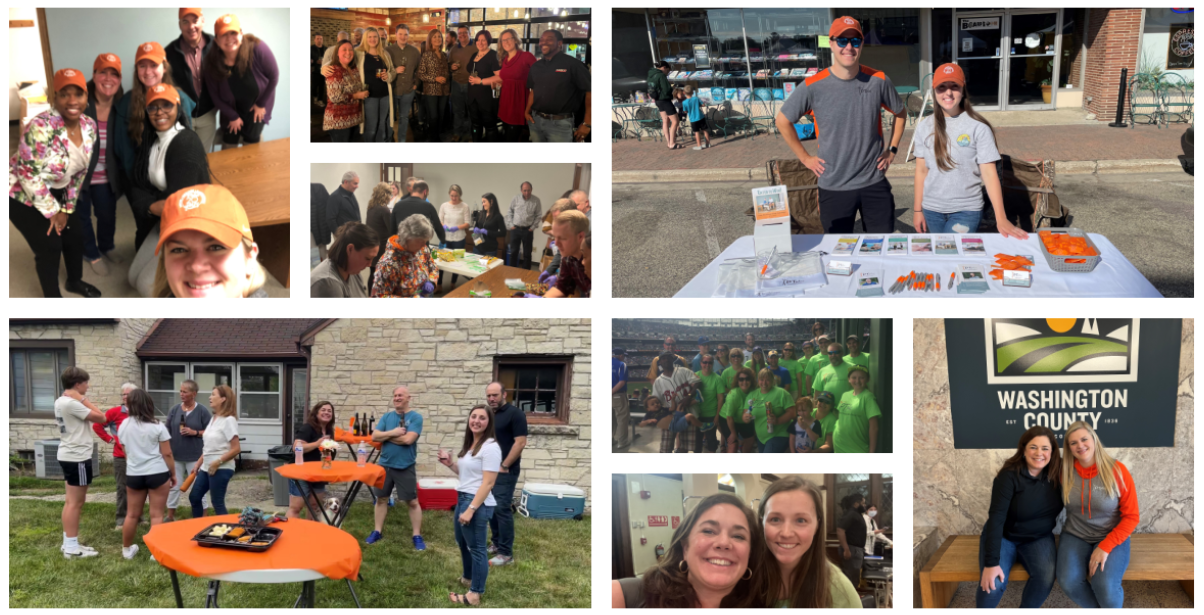 Sleep is a critical component of our health. Our mental and physical health is impacted negatively when we are sleep deprived. Pain intensity is also increased when there is lack of sleep. During sleep, our body works to repair cells involved in muscle function, organ function and other critical processes of the body. If we are not sleeping, our body is not able to heal and repair from injuries or insults and pain can increase. Some ways that may help an individual sleep better include getting regular physical activity during the day, decreasing caffeine intake and avoiding screen time 1-2 hours prior to bed. It is also important to assess how supportive an individual’s mattress is, if the mattress is older and no longer holding support, this can impact sleep negatively and may be difficult finding a comfortable position. Increasing pillow support for neck, hips and back may help improve sleep if an individual suffers from aches and pains that keep them up at night. Lack of sleep can also be due to breathing complications. Individuals who wake up tired and fatigued and have noticed difficulty breathing at night should follow up with their doctor as they may have sleep apnea and may require further testing. Physical therapy can be beneficial for those individuals dealing with pains and aches making it difficult to fall asleep and stay asleep. Follow up with your physical therapist for further information if you are suffering from sleep loss.  These PT Pro Tips are brought to you by our Elm Grove Therapist, Sarah Heitman, PT, DPT. Outside of work Sarah loves spending time with family, hiking, cross country skiing, playing tennis, disc golf and traveling around the world. She has a passion for traveling and exploring new places. You can catch Sarah having a good time at local Zumba classes, where she really enjoys dancing.
0 Comments
Welcome to the February 2024 edition of Your Health, powered by PT Plus. Our promise: Partnering on your journey to live your best life! Whether you are currently a patient, or you haven’t been in for awhile, we are committed to providing you with resources and knowledge to support you health and wellness. What's New at PT Plus 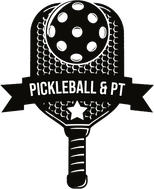 PickleBall Exhibition Join us February 13th at our Cedarburg location for a Pickleball Lab Exhibition with Gina Cilento from 5:30-7pm. Come and watch exciting pickleball matches. All are welcome, bring your friends, family, and whatever snacks or beverages you want to sip on. Our PT Plus therapist, Jess, will be there and would love to see you! Patient Success We believe that providing quality, customized one-on-one care is essential to helping you reach your desired outcomes. Don’t take our word for it, check out this recent review: Stephanie Schmidt, ★★★★★ My experience at PT plus has been phenomenal. They really take the time to listen to you and work with you. I came in almost two years post op from a rotator cuff surgery and previous PT elsewhere and I wish I would have come sooner. I am seeing great progress and my shoulder/rotator cuff are finally seeing great improvement.  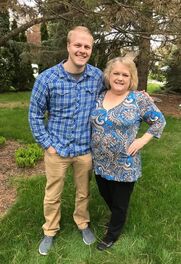 Honoring Mom: A Personal Journey Through Heart Health This month, as we embark on Heart Health Month, our therapist Peter Eidsmoe felt compelled to share a personal chapter of his life in the hope that it might shed light on the importance of cardiovascular health and the impact of heart disease on families. Read Peter's story here. 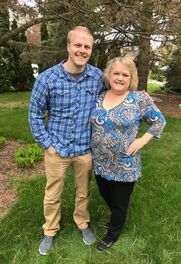 My name is Peter Eidsmoe, a Physical Therapist at PT Plus’s West Bend location. The month of February is American Heart Month. I wanted to use this month of awareness to share a personal experience showing the importance of being able to recognize early signs of heart disease, something I truly take to heart (no pun intended). Five years ago, my mother was unfortunately a victim of an unexpected Myocardial Infarction or “Heart attack”. Little did my family or I know, this was something building over time. However, looking back closely there were some signs that could have hinted towards early intervention to be taken. I first want to stress that every individual with heart disease presents symptoms differently, if symptomatic at all, but especially in females. Shortness of breath is likely the most important warning symptom of active heart disease. My mom had a history of having asthma for years though, occasional shortness of breath moments was nothing new for her. However, looking back closer she did have more episodes of it with shorter durations of walking, stairs even sitting over the last 6 months in addition to unexplained sweating with lighter activities. She complained of throat pain and at one point saw an ENT, who could not find a legitimate reason for it. She also experienced lingering upper back and neck pain that would not change despite interventions I would give as a Physical Therapist. At one point, I even recommended her seeing her primary care physician (not even thinking about heart disease as a cause) due to her symptoms being out of the ordinary for a period of time. Unfortunately, she never got the opportunity to schedule an appointment, passing away shortly after this. Naturally after the fact, it’s easy to ask yourself “How did I miss this?”. As I mentioned earlier, every individual shows symptoms differently. These symptoms did not all happen in a week, they were gradual over the course of months to a year. Her blood pressure was normal, she had asthma, her previous doctor visits never picked up on anything abnormal. It’s no one's fault but this is why it is so important to have a basic understanding of recognition of heart disease and proactive ways to improve heart health. My mom, like so many other mothers and loved ones around the world, have sadly shared the same experience. I hope anyone reading this can use my experience for someone they know or even for themselves, but at the very least encourage you to engage in healthy lifestyle changes for the better of everyone. The last few years have been A LOT, and well, they really haven’t stopped being A LOT for many people. As a new year begins, a new hope for positive changes also begins. If you’re looking for the “how” to getting 2024 off to a better start, I have a few suggestions for you: Start. Start with the things you do each day. Some of my favorite things to teach patients are the simple, everyday things.
Regular exercise and activity will help you keep your strength through the lifespan. They will help you continue doing the things you love - better and longer. Struggling or have questions? Schedule time for one of our PTs to do a one-on-one evaluation to get you back on track. We want you to get back to Living Your Best Life.  These PT Pro Tips are brought to you by our Racine therapist, Katie Schaul PT, DPT. Fun Facts About Katie: Oofda is her favorite Midwest phrase. She has lived all over the states, but came back to the Midwest because of family. Midwest people are her favorite; being the most genuine people and they both appreciate and understand sarcasm.  Physical therapy and nutrition are often seen as separate, but the truth is, they are deeply intertwined. To get the most out of PT, especially after an injury or surgery, integrating both is crucial. Here's why: Food Fuels The Body During recovery from an injury or surgery, your body is working to heal itself. The activities and exercises you're doing in PT are designed to help it along. To take advantage of all the work you and your body are putting in, proper nutrition is critical. Protein provides the building blocks for tissue repair and muscle growth. Carbohydrates provide energy and help support your immune system. Your body also needs healthy fats to regulate inflammation and to build certain cells. Being short on any of these critical components will slow your recovery down. You also need enough micronutrients, like vitamins and minerals. For example, vitamin C is needed to make collagen, which goes into bones, skin, and connective tissue. Vitamin D helps your body absorb calcium, which is important for healing fractures, or surgeries involving bones. Iron helps your blood cells carry oxygen throughout your body, which is needed for healing in general. Again, being low on any of these micronutrients will affect your healing. Your Weight Affects Your Health Being overweight directly affects your health. It puts you at higher risk for cardiovascular disease, stroke, osteoarthritis, back pain, diabetes, sleep apnea, and more. All of these are conditions that you might see a PT directly for, or that will impact your healing. Eating a healthy diet is the most effective way to reduce body weight. Combining a healthy diet with exercise is even better for your health. As an example, an 18-month study of 450 people with knee osteoarthritis showed that the group that lost weight through a diet and exercised had less pain, better walking speed, and lower joint forces in their knees than groups who either only lost weight, or only exercised. How can a physical therapist help with nutrition? While PTs are not authorized to provide individual diet plans or medical nutritional advice, they can still help with your nutrition.
Finally, your PT can recognize when your nutrition needs exceed what they are able to provide. In that case, they can refer you to and collaborate with a registered dietician or other qualified healthcare professional for help in dealing with complex nutritional needs or recommending specific dietary changes. By combining the power of physical therapy and nutrition, you can achieve your recovery goals faster and feel your best! References:
Welcome to the December 2023 issue of In Focus with PT Plus Physical Therapy What's New at PT Plus  Holiday Hours PT Plus will be closed December 25th celebrating Christmas and January 1st celebrating the new year. Wishing you and your family the best this holiday season!  Welcome Jess Meeusen! We are excited to welcome Jess to our Cedarburg and West Bend Clinics. Throughout her many years of being a gymnast, she witnessed teammates suffer injuries as well as experiencing her own. Through these injuries, Jess was introduced to the rehabilitative process which helped fuel her passion of helping people with pain and getting them back to doing the activities they love. To get to know Jess better, visit her bio on the PT Plus website.  New Year Reminders As the new year approaches, we wanted to share a few friendly reminders. When attending your first appointment in the new year, you will be asked to re-sign some paperwork, provide your insurance card and form of identification, and be asked for payment at time of service. We look forward to seeing you! Recent Google Review Jennifer Herzog, ★★★★★ My experience with PT Plus has been exceptional. I came to them after a month of near-constant pain that was keeping me up at night. Within one week/two sessions, I was living normally again, and within a couple months, I was pain-free and building strength, flexibility, and habits to prevent future injuries. The staff is friendly, knowledgeable, and helpful, and I could not be happier with my experience.  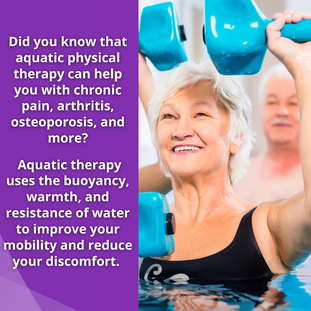 AQUATIC PHYSICAL THERAPY: THE SCIENCE BEHIND THE WATER Aquatic physical therapy involves performing exercises and activities in water, usually a heated pool. Aquatic physical therapy can have lots of benefits for people with conditions like arthritis, back pain ... Read More Are you ready to make a splash towards a healthier, happier you? Look no further than PT Plus's Aquatic Physical Therapy sessions offered in West Bend and Port Washington – a unique and rejuvenating approach to rehabilitation and wellness! 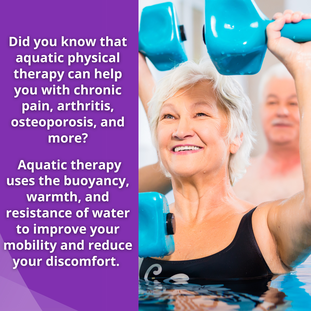 Aquatic physical therapy involves performing exercises and activities in water, usually a heated pool. Aquatic physical therapy can have lots of benefits for people with conditions like arthritis, back pain, fibromyalgia, osteoporosis, neurological disorders, sports injuries, and more. Let's DIVE IN and explore some of the advantages of aquatic physical therapy. Reduced Weight Bearing One of the main benefits of aquatic physical therapy is that it reduces the impact and stress on the joints and muscles, thanks to the buoyancy of water. When submerged, you feel lighter and more supported, which allows you to move more easily and comfortably. Your therapist can use different depths of water to change how much force you experience. For example, when the water is up to your neck, you only bear about 10% of your body weight. This can be especially helpful for people who have difficulty walking, standing, or exercising on land due to pain, stiffness, or weakness. Built-In Resistance Another benefit of aquatic physical therapy is that water provides natural resistance. You've felt this if you've ever tried to move your arm or leg quickly underwater, or run in a pool. Water resistance can be adjusted by changing the speed, direction, or surface area of the movement. There is also equipment like hand webs, water weights, and kickboards that can make movements more challenging. Resistance training can help increase muscle strength and endurance, as well as improve blood circulation and heart health. Compression A third benefit of aquatic therapy is the hydrostatic pressure. This is the force that water exerts on an object, which increases with depth. If you've ever dove to the bottom of a deep pool and felt pressure on your body or in your ears, this is what caused it. The pressure of the water can be used to help reduce swelling in joints or tissues. The pressure of the water also gives your brain more input about the position your body and limbs are in. This can help improve proprioception, or the sense of where your body parts are in space. Improving proprioception can help enhance balance, coordination, and stability. Heat Our last benefit of aquatic physical therapy is that it takes advantage of the warmth of the water, which can help relax the muscles and relieve pain. Warm water stimulates nerve endings in your skin, which can help block pain signals. It also dilates the blood vessels, which can increase blood flow and oxygen delivery to the injured or affected areas. Lastly, warm water can also have a calming effect on the mind and body, which can help you feel better. Aquatic PT can reduce the impact and stress on the joints and muscles, provide resistance and hydrostatic pressure, and use the warmth of the water to reduce pain while improving strength, endurance, proprioception and function. Aquatic physical therapy can also be fun and enjoyable. If you are interested in aquatic physical therapy, talk to your doctor or physical therapist to see if it is suitable for you. References:
Welcome to the November 2023 issue of In Focus with PT Plus Physical Therapy What's New at PT Plus  Holiday Hours PT Plus clinics will be closed on November 23rd and 24th spending time with friends and family for Thanksgiving. We hope you enjoy your holiday and we will see you all when we return!  Introducing PT Plus Online Payment PT Plus has a new online payment option to take the hassle out of patient payments! Simply go to ptplus.com/payment and pay your bill quickly and easily.  Salvation Army Angel Tree We are partnering with the Salvation Army Angel Tree program to help provide Christmas gifts for children around Southeast Wisconsin. If you would like to participate and "Adopt an Angel", please email patientcare@ptplus.com for more details. Deadline to drop-off gifts at one of the PT Plus clinics will be Friday, December 1st. Recent Google Review Debbie Gerke, ★★★★★ PT Plus has been a lifesaver. When I started with PT Plus I was walking like I needed a walker and traditional PT wasn’t helping. My hips were in so much pain I wasn’t even sure where the pain was coming from. My therapist has really worked magic to alleviate the pain and help me progress to walking more normal. I like that she isn’t just focused on the hips but understands how the whole body works together. I’m not fully fixed yet but I feel so much more positive about how I can get there. 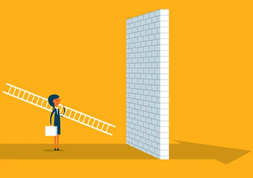 Time, cost, convenience… What’s keeping you from physical therapy? According to a 2022 American Physical Therapy Association (APTA) consumer research report, among the given reasons for skipping a physical therapy referral, nonusers selected cost, time and convenience as the top barriers. While these barriers all hold true ... read more.  According to a 2022 American Physical Therapy Association (APTA) consumer research report, among the given reasons for skipping a physical therapy referral, nonusers selected cost, time and convenience as the top barriers. While these barriers all hold true for certain individuals, we do our best at PT Plus to meet your needs and help overcome these obstacles. Cost Non physical therapy users stated they could not afford the care or their insurance did not cover the services needed. PT Plus is in network with most major insurance providers. As part of our service, we have an Insurance Specialist who will verify your benefits, and can give you an estimate on what you can expect for PT Plus services. We accept HSA/FSA for all services provided. If we are out of network, we also offer discounted self-pay rates to help ease the financial burden and allow you to continue receiving the care you need. Time Non physical therapy users stated lack of scheduling availability caused them to not come in for the care they required. PT Plus clinic hours vary by location, but are generally open from 8AM - 5PM, Monday - Friday. Our therapists work hard to make sure they are available to meet your needs. If we don't have availability that fits within your schedule, let us know and we'll see how else we can help. Convenience Non physical therapy users stated the distance from work or home to a clinic being too far lead them to not pursue physical therapy. PT Plus has eight clinic locations across southeast Wisconsin, spanning across five counties. We are always looking to expand into new areas to bring high quality physical therapy to citizens throughout Wisconsin. The Value of Physical Therapy at PT Plus We believe that everyone should have a PT on your team, just like you do a primary care doctor or a dentist. The APTA defines physical therapists as movement experts who improve quality of life through prescribed exercise, hands-on care and patient education. Who couldn't use someone like that in their life? At PT Plus, our therapists work with you to build a relationship, listen to your story, and treat you in a unique way so that you are able to see and feel the difference. Through our treatment sessions we can change your function. Our goal is to change your function, not necessarily your pain and as you start to function better, your pain will likely also get better. We want to know - what is your plan, what are your goals? Whether you are trying to play with your grandkids, compete in competitive sports, or simply get out of bed with less pain, we are here to help. Life is a contact sport - stuff happens. How will you manage little setbacks that might occur during the process of you reaching your goals? The body has the ability to heal, so what are your parameters to come see a PT Plus physical therapist? If your pain doesn't subside in 48 hours, come see us and we may be able to help you with 1-2 visits and give you the tools to continue improving outside of the clinic. Manage your overall health and wellness in a way that addresses the issues before they become chronic. Allow PT Plus to become a partner on your wellness journey! A letter, from PT Plus Owner, Amy Snyder:  Hello Friends, October brings a new season full of change. Changing temperatures, changing leaves, and changing activities. It seems fitting that a profession which champions change, celebrates National Physical Therapy Month in October. Changes to mobility related to aging, unexpected injury, or health conditions are less welcome changes. However, these changes all have an impact on how we live our lives and enjoy the people we love most. When our bodies can’t keep up with our hearts and minds, we are left frustrated, angry and disappointed. What happens next is a choice - a choice to face the challenges of change and seek solutions. We hope you Choose PT as your solution. Choose more movement Choose less pain Choose cost effective healthcare Choose individualized solutions Choose wellness Choose better health Choose you We could be biased here at PT Plus. Every day we see the impact of our profession on the lives of our patients, their family and their friends. As a locally owned and operated small business, we believe that patient-centered care is not only the right thing to do, but also creates a greater impact on the communities we love here in Wisconsin. One patient at a time, we believe that healthier and happier communities move us all forward.
Thank you for letting us partner on your wellness journey. Cheers, Your PT Plus Family |
Archives
March 2024
Categories |
|
Central phone: 262-796-2850
Central fax: 262-796-2851 Central email: patientcare@ptplus.com Website by RyTech, LLC
|
|



